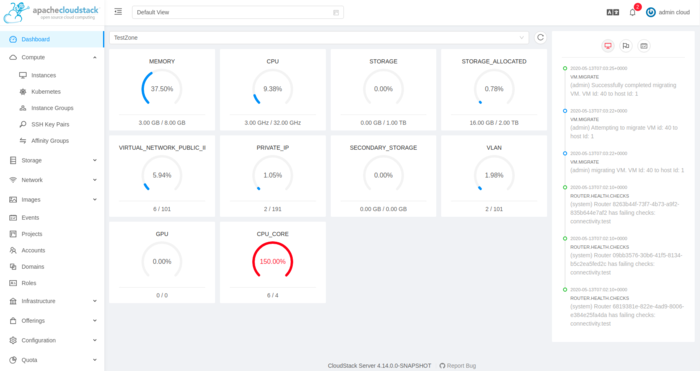The cloud platform has been released Apache CloudStack 4.15 to automate the deployment, configuration, and maintenance of private, hybrid, or public cloud infrastructure (IaaS, infrastructure as a service). The CloudStack platform was transferred to the Apache Foundation by Citrix, which received the project following the takeover of Cloud.com. Installation packages prepared for CentOS and Ubuntu.
CloudStack does not depend on the type of hypervisor and allows you to use in the same cloud infrastructure at the same time Xen (XCP-ng, XenServer / Citrix Hypervisor and Xen Cloud Platform), KVM, Oracle VM (VirtualBox) and VMware. A web interface and a special API are offered to manage the user base, storage, computing and network resources. In the simplest case, a cloud infrastructure based on CloudStack consists of one control server and a set of compute nodes, on which the guest OS is run in virtualization mode. In more complex systems, a cluster of multiple management servers and additional load balancers is supported. At the same time, the infrastructure can be divided into segments, each of which operates in a separate data center.
Highlights innovations :
- A new web interface is offered by default. The ability to use the old interface is left as an option and is planned to be removed in the 4.16 release.

- Added support for VMware storage policies, vSAN, VMFS6, vVols and VMware storage clusters to vSphere storage utilization tools.
- Added templates for deploying VMware virtual machines with full support for parameters passed in OVF files.
- Additional tools have been added to manage storage.
- Role-Based User Rights Management (RBAC) support has been implemented in projects.
- Provided support for CentOS 8, Ubuntu 20.04 and XCP-ng 8.1 distributions, as well as MySQL 8.
- Integrated noVNC console for faster access to virtual machine consoles.
- Added support for the Redfish standard, which defines a RESTful interface for remote infrastructure management.
- Added support for guest virtual machines.
- PVLAN support implemented for L2 networks.
- Added the ability to boot into the hardware configurator in BIOS (VMware).
- A service has been proposed for configuring the root disk.
